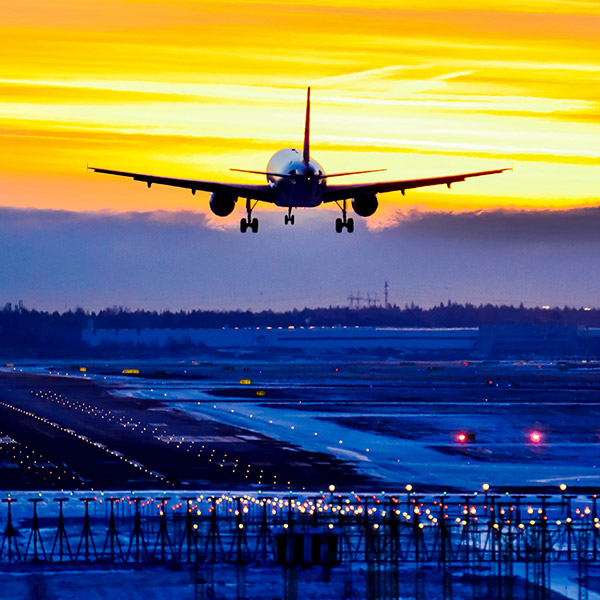Our chance to transform aviation — and help the climate

If you fly, plane trips are likely the largest part of your carbon footprint.
More than 850 million tons of carbon dioxide emissions a year come from planes — pollution that's on track to triple by 2050. If it were a country, aviation would be one of the world’s top 10 emitters.
Here's our chance to transform the aviation industry, making it more efficient while protecting the climate.
Shifting how airlines fly
In 2016, airlines and governments took a big step for the climate by agreeing to cap the carbon dioxide emissions of international flights, starting in 2021.
The system they created lets airlines reach their targets by:
- Deploying new technologies.
- Flying more efficient planes.
- Using alternative fuels that emit less carbon dioxide.
- Buying carbon offset credits.
Companies buy offset credits to balance — or offset — their own emissions. The credits help pay for environmental projects that keep carbon dioxide out of the atmosphere, such as those that save forests.
The new commitment to reduce aviation emissions is expected to drive demand for credits up to 3 billion tons in 15 years. That means 3 billion fewer tons of pollution hurting our climate.
Making sure the climate actually benefits
Some airlines are already buying offset credits voluntarily. But they need to watch out: The quality and accounting practices of some programs are questionable.
The biggest danger is double-counting: An emissions reduction is counted once by the country that made the cut, and again by an airline that bought that offset, cheating the atmosphere.
The same goes for offsets. Credible ones, such as large-scale tropical forest protection, advance climate progress. Dubious ones, such as biofuels made by destroying forests, do more harm than good.
We can avoid those pitfalls, with the new system — known as CORSIA, or the Carbon Offsetting and Reduction Scheme for International Aviation.
But first, the United Nations aviation agency that runs CORSIA must create strong rules and keep the process transparent. We have to make sure airlines use only high-quality offset credits and fuels.
Sparking massive potential for innovation
Done right, CORSIA can unlock a flood of demand for carbon reductions, potentially generating billions of dollars for investment in new technologies.
Innovations can span the industry, from instruments that help set more efficient flight paths and reduce delays, to lighter airframe materials and hybrid electric aircraft that need less fuel.
Emerging technologies could also make cleaner jet fuel, by producing fuel from waste in ways that absorb more carbon than they emit.
Such investments, and continued commitment from government and industry, will be key to making aviation friendlier to the skies.
Aviation resources
- Our work: Reducing aviation's climate impact
- Fact sheet: Bad carbon credits could derail UN aviation climate agreement [PDF]
- Historical snapshot: Cutting carbon pollution from aviation: A major breakthrough










